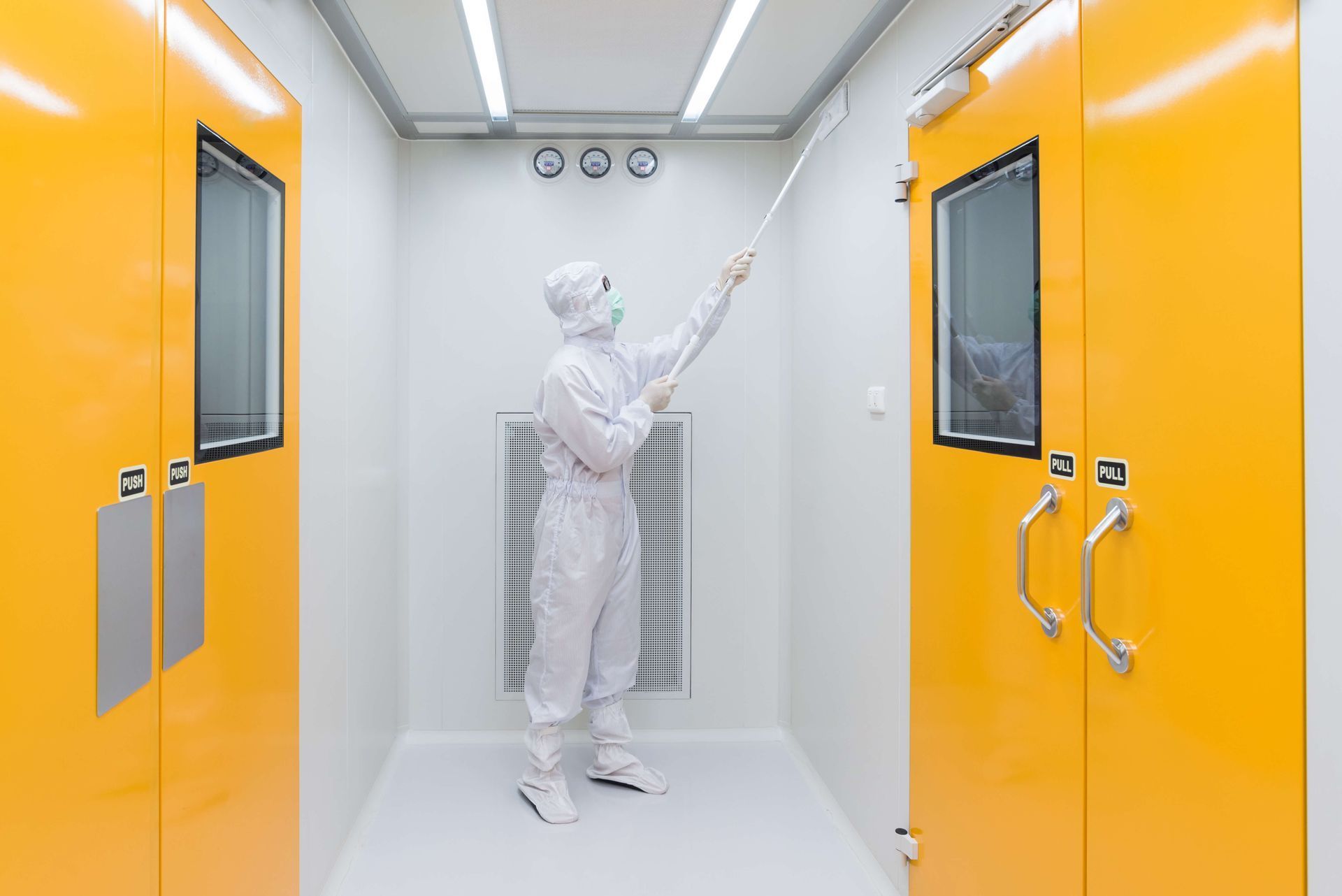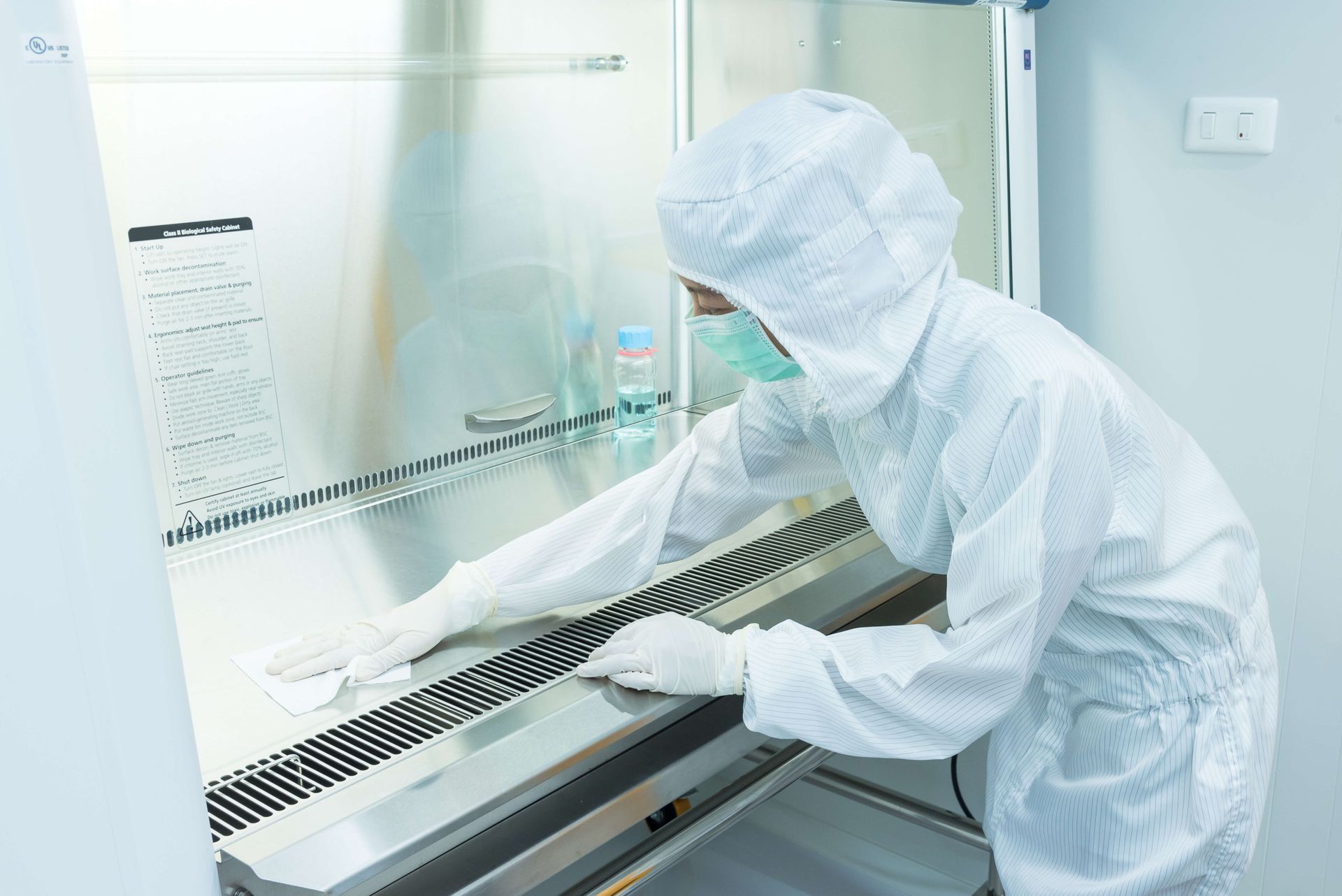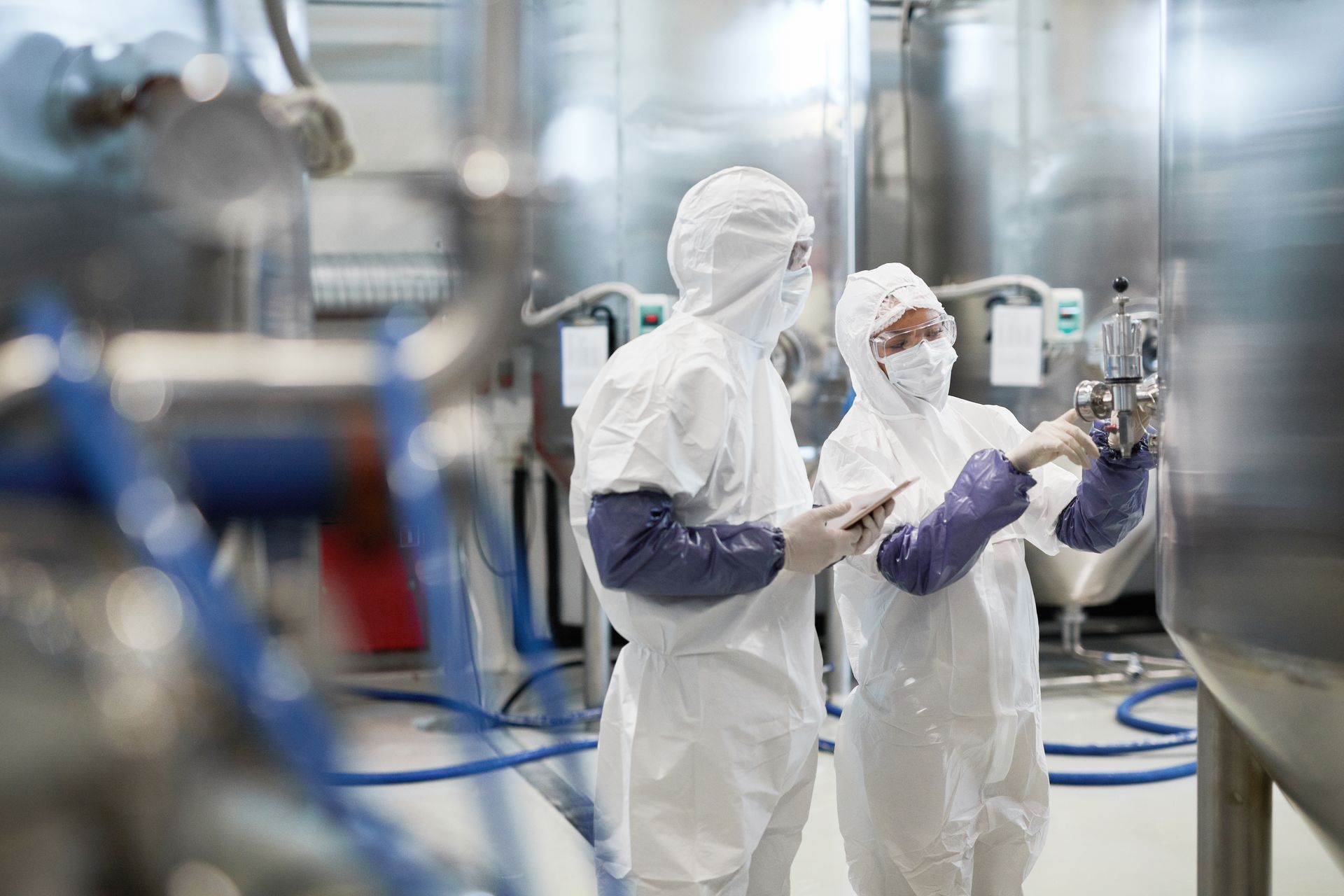By Kjeld Lund Dec 11, 2025
•
December 11, 2025
Handling Chemicals and Gases in Cleanrooms 1 Introduction Handling chemicals and gases in cleanrooms demands strict adherence to engineered controls, documented procedures, and validated safety mechanisms. Cleanrooms regularly use corrosive, flammable, pyrophoric, toxic, or high-purity chemicals and gases to support semiconductor fabrication, pharmaceutical manufacturing, biotechnology processes, and advanced materials production. These substances introduce contamination, safety, and compatibility risks that must be managed through facility design, environmental controls, and operator discipline. This article outlines the engineering principles and operational requirements that ensure safe, compliant handling of chemicals and gases in controlled environments. 2 Chemical and Gas Hazards in Cleanrooms Cleanroom processes involve diverse hazard classes: Corrosives (e.g., acids, bases) that can damage materials and equipment. Flammables and combustibles requiring ignition control and ventilation. Toxics and sensitizers that demand containment and exposure monitoring. Pyrophoric gases that ignite on contact with air. High-purity process gases where even minor contamination affects product performance. Volatile compounds that risk particle generation or chemical interactions. These hazards require coordinated engineering controls—airflow design, exhaust systems, containment, leak detection, material compatibility—to protect both personnel and product integrity. 3 Engineering Controls for Safe Chemical Handling Effective chemical handling begins with engineered systems that prevent contamination and exposure. Local Exhaust Ventilation (LEV): Fume hoods, wet benches, and chemical process tools maintain negative pressure and high capture velocity to contain fumes and aerosols. Exhaust systems must include corrosion-resistant ductwork, filters, and appropriate scrubbers. Chemical-Resistant Surfaces and Tools: Benchtops, tanks, piping, and fittings must be constructed from chemically compatible materials (e.g., PVDF, PTFE, stainless steel) to avoid corrosion, particle shedding, or chemical interactions. Secondary Containment: Trays, cabinets, and bunding prevent spills from spreading into cleanroom circulation zones. Ventilation and Pressure Control: ISO 14644 cleanrooms depend on stable airflow and differential pressure regimes. Areas where chemicals are opened or transferred typically operate under slight negative pressure relative to adjacent clean zones to limit contamination and personnel exposure. 4 Chemical Storage Requirements Proper storage reduces contamination, fire, and compatibility risks. Segregate incompatible chemicals (oxidizers, flammables, acids, bases, reactive chemicals). Use certified safety cabinets for flammables and corrosives, with appropriate ventilation when needed. Implement FIFO (first-in, first-out) inventory control to minimize expired materials. Maintain clear labeling with lot numbers, hazard classifications, and expiration dates. Store bulk chemicals outside the cleanroom when feasible, transferring only required volumes into controlled areas. Storage strategies must be documented, validated, and routinely audited. 5 Chemical Transfer and Dispensing Procedures Transferring chemicals is one of the highest-risk cleanroom operations. Best practices include: Closed transfer systems such as quick-connect fittings, sealed dispensing systems, or pump transfer units. Grounding and bonding when handling flammable liquids to prevent static ignition. Controlled point-of-use delivery , ensuring chemicals are dispensed only in properly ventilated, validated equipment. Drip trays and secondary containment for all dispensing stations. Immediate wipe-down protocols for spills or splashes using compatible materials. Operators must be specifically trained on the procedures and hazards relevant to each chemical class. 6 Gas Handling and Distribution Systems Process gases introduce unique technical challenges requiring specialized system design. Gas Cabinets and Enclosures: Hazardous gases must be stored in ventilated gas cabinets equipped with automatic shutoff valves, fire detection, and leak monitoring systems. Gas Lines and Manifolds: Material selection (stainless steel, electropolished tubing, VCR fittings) ensures purity and prevents particle generation. Connections must follow semiconductor-grade or GMP-appropriate specifications. Leak Detection and Monitoring: Toxic, corrosive, and pyrophoric gases require fixed gas detection systems with alarms, interlocks, and automated isolation valves. Calibration and functional testing must follow documented schedules. Pressure Regulation and Purging: Systems must include pressure regulators, purge lines, and automated sequences ensuring safe startup, shutdown, and cylinder changes. 7 Contamination Control Considerations Chemicals and gases can be sources of both chemical and particulate contamination. Control measures include: Using high-purity reagents certified for cleanroom applications. Implementing filtered dispensing systems to remove particles. Maintaining closed pipelines for process gases to avoid ambient exposure. Ensuring proper airflow direction to prevent chemical emissions from reaching sensitive production areas. Validating cleaning protocols for tools and containers handling chemicals. These measures preserve product quality and maintain the cleanroom’s ISO classification. 8 Personal Protective Equipment (PPE) and Gowning Chemical handling requires enhanced PPE beyond standard cleanroom garments. Depending on the hazard, PPE may include: Chemical-resistant gloves, often double-gloved. Face shields or splash goggles. Chemical-resistant aprons or smocks worn over cleanroom gowns. Respiratory protection where engineering controls alone are insufficient. Antistatic footwear for flammable chemical handling. Gowning protocols must define required PPE by task and substance, supported by documented training and periodic competency assessments. 9 Emergency Procedures and Spill Response Cleanrooms must maintain comprehensive, rehearsed emergency procedures aligned with the chemicals and gases in use. Spill kits must be compatible with each chemical class and accessible without obstructing cleanroom flow. Emergency shutoff switches , interlocks, and isolation valves must be clearly marked and tested. Evacuation procedures must reflect the hazard characteristics of specific gases or chemicals. Incident documentation must capture cause, response actions, and corrective measures. Post-incident clearance requires environmental monitoring to ensure the cleanroom returns to safe operation. All emergency procedures must be controlled documents subject to periodic review. 10 Waste Management and Disposal Chemical waste streams require segregation, containment, and compliant disposal: Use closed, labeled waste containers made of compatible materials. Maintain segregated waste pathways for corrosives, organics, and reactive chemicals. Ensure ventilated waste accumulation areas outside critical zones. Document waste transfers with signatures and collection logs. Validate all waste handling procedures according to environmental and safety regulations. Improper waste handling can compromise both cleanroom safety and contamination control. 11 Documentation, Training, and Compliance Requirements Handling chemicals and gases must be supported by a robust document-control framework: SOPs covering storage, transfer, dispensing, PPE, spill response, and waste disposal. Equipment specifications and maintenance records for hoods, cabinets, sensors, and gas lines. Training records linking personnel competence to specific procedures and hazards. Change-control documentation for chemical substitutions, equipment upgrades, or procedural modifications. Routine audits verifying adherence to procedures and system performance. Documentation must remain current, traceable, and aligned with ISO 14644, GMP expectations, and applicable safety standards. 12 Best Practices for Safe and Compliant Operations Clean, safe chemical and gas handling integrates engineering design with disciplined operations. Key best practices include: Maintain strict segregation of incompatible chemicals. Use validated containment systems for all dispensing and gas delivery operations. Ensure regular calibration and testing of detection, ventilation, and control systems. Train personnel thoroughly and maintain documented competency assessments. Apply preventive maintenance to all chemical-handling equipment. Conduct routine hazard assessments to evaluate evolving process risks. Align all procedures with a robust document control system. 13 Conclusion Handling chemicals and gases in cleanrooms combines contamination control, engineering discipline, and operator safety. By integrating reliable ventilation, validated containment systems, rigorous documentation, and comprehensive training, cleanroom facilities can safely manage hazardous substances without compromising product quality or regulatory compliance. In demanding environments where chemical purity and operator protection are equally critical, a structured and technically sound approach ensures stable, predictable, and safe cleanroom operations. Read more here : About Cleanrooms: The ultimate Guide







